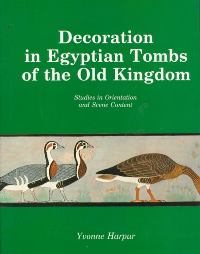| Main » Ad Board » ДРЕВЕН ЕГИПЕТ И АФРИКА » Изкуство |
Yvonne Harpur - Decoration in Egyptian Tombs of the Old Kingdom
| 16.04.2020, 06:16 | |
Подробно проучване на декорацията в частните гробници от епохата на Старото царство в Древен Египет (XXVII-XXII в. пр. н.е.) и нейните художествени особености. Представени са различните видове фрески и релефи и е очертан генезисът на древноегипетския изобразителен канон. АЛТЕРНАТИВЕН ЛИНК / ALTERNATIVE LINK: - на английски език, от Google Docs,формат PDF. Сваляне с ляв бутон (downloading by left button) от страницата на предоставящия сървър, после през бутона стрелка надолу/after by down arrow button.
| |
| Views: 1357 | Placed till: 25.12.2021 | Rating: 0.0/0 | |

